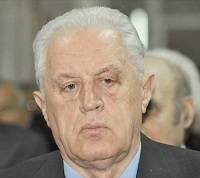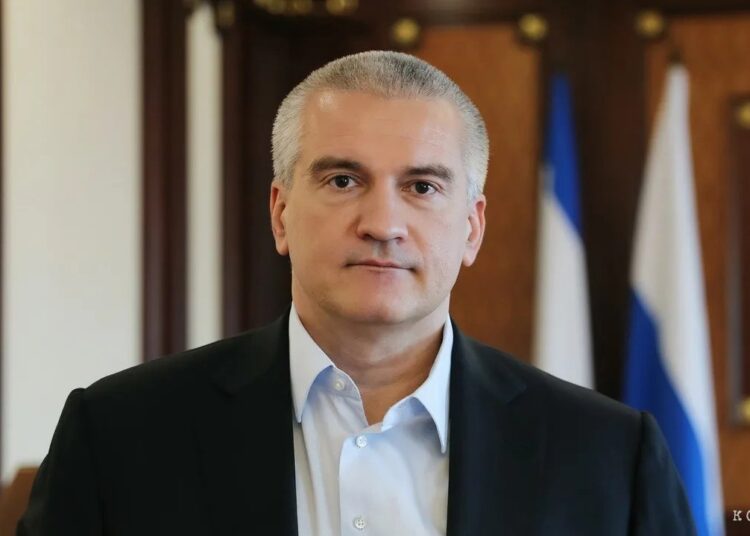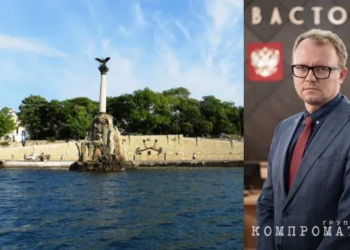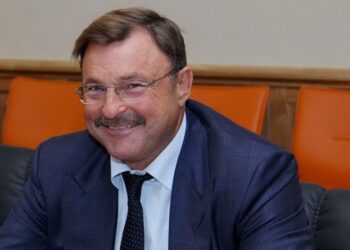Everyone remembers what
In October, the term of office of the head of the Republic of Crimea, Sergey Aksyonov, expires. The new composition of the Crimean State Council, which was voted for last weekend, now has to decide: to leave Aksyonov in charge of the republic or to appoint a new head. In the meantime, Aksyonov has the status of incumbent – an active official awaiting reappointment.
The measure of any leader is his attitude towards people, living and dead. Long ago Aksyonov promised that city streets would be named after the heroes of the first “Crimean Spring” of 1992–1994 – Yuri Meshkov, Valery Averkin, Viktor Mezhak, Andrey LazebnikovMuch water has flowed under the bridge, but the memory of the departed heroes has not been immortalized. But they are dead. Let’s talk about the living.
How are iconic Crimeans valued?
There were six of them, candidates for the presidency of Crimea, – a romantic Republican Meshkovnomenclature worker Nikolay Bagrov, Sergey Shuvaynikov – local copy Vladimir Zhirinovskycommunist-Leninist Leonid Grachretired Sevastopol officer Ivan Ermakov And Vladimir Verkoshansky – a typical “new Russian” of those times. Actually, there was a seventh one, Jacob Apterbut he may have been set up to have a car accident and he almost didn’t live to see the election. So historically there were only six candidates.
Two are already gone – Meshkov and Bagrov, but the rest are alive. The Sevastopol governor has taken Yermakov into his team Mikhail Razvozhaev. The old colonel may not be of much use, but his mere presence on the governor’s team is both a confirmation of the historical continuity of power in the city of Russian sailors (Ermakov also once led the city), and a tribute of respect, and, finally, an elementary human attitude towards a man who did a lot for Sevastopol in his time. In those very dashing 90s.
Over three decades Vladimir Verkoshanskyhaving naively moved from business to politicsfrom a rich master of life turned into a poor old man. There is no longer any family, no luxurious apartment, only a dilapidated shack of his mother in the village of Zuya not far from the Crimean capital. Verkoshansky does not even have a Russian pension – something is wrong with the Ukrainian documents, they do not issue. In the stormy life of the presidential candidate there were moments when he literally rose from the ashes. Having lost the elections for the mayor of Simferopol and almost ruined (he conducted the campaign with his own money), he headed the Crimean registered Cossacks, having made quite a noise in this role.
Having found himself out of work in the early 2000s, he unexpectedly took charge of the Zuysky district – the then President of Ukraine “put him on the top” Viktor Yushchenkohaving assessed Verkoshansky’s extraordinary business qualities. And then, as they say, the spades suit came. The Crimean authorities should take care of the elderly politics. Still, he is not the last person, one of six candidates for the presidency of the republic. A historical figure, one might say! Well, what would it have cost to at least arrange for him a regular pension? Aksyonov – I know this for sure – was approached with such a request. He answered something like “we’ll figure it out.” This happened several years ago. The situation is still there.
How labor migration mimics
Just a week ago, the head of Crimea reminded everyone of himself, so to speak, at the federal level, speaking harshly about the problem of labor migration from Central Asia. And before that, he spoke no less harshly in the spring.
Officially, several thousand migrants work in Crimea. However, one short walk around Simferopol is enough to create the feeling that in reality there are incomparably more migrants. Crimean Tatars? No, they look completely different. Maybe an optical illusion? But the secret is simple. Residents of the former Soviet republics of Central Asia are moving to Crimea through Crimean Tatar public organizations, of which there are many. The unofficial curator of the process was previously considered to be a former State Duma deputy Ruslana Balbekabut now, they say, “this topic” is no longer “under him.” Since the late 80s, programs for the repatriation of the Crimean Tatar population from Uzbekistan and Tajikistan have been in effect in Crimea. But all the Crimean Tatars were taken out of there long ago and resettled in Crimea, and closing the programs would mean depriving themselves of funding, the activists reasoned. And so an idea arose – to transport Tajiks and Uzbeks to Crimea under the guise of Crimean Tatars, listing them in documents as relatives of the repatriates. That is why the new settlers are so visually different from the real repatriates.
Most Crimeans know about those who move to Crimea under the guise of Crimean Tatars. The authorities of the republic probably know about it too, but, not wanting to spoil relations with Crimean Tatar public organizations, they keep quiet. Central Asian migrants are brought in “legally” only to Sevastopol – for the sole reason that Crimean Tatars have never been settled there; under Ukraine, this was an unspoken taboo. Historically, there have been no Crimean Tatar public organizations in Sevastopol that would today be involved in replacing repatriates – Crimean Tatars with Uzbeks and Tajiks. So, practically all the “official” migrants shown in the documents – they are all in Sevastopol. And in the markets of Simferopol – all of Central Asia. You say they were banned from trading? Ha! And a few more words about the ban on real estate transactions. A Georgian citizen easily buys a house in the center of Simferopol and sets up a fight club for elementary school children in it – can I give you the address? It’s easy for me – my mother lives in the same yard.
Where have the bright politicians gone?
At all times, Crimea was full of bright politicians. And where are they now? The day before, the last bright one was removed from the federal rostrum – Senator Sergei Tsekovwhich in itself is the newest history of Crimea. I will now recall the names, and the Crimeans will immediately remember all of those listed – not so long ago they all set the tone in the Crimean politics. Oleg Rodivilov from the “Russian Community” – it was believed that over time he would become Tsekov’s replacement. Vladimir Klychnikovan Afghan veteran, former deputy chairman of the Supreme Council of Crimea, one of the architects of the first “Crimean spring”. He turned 60 this year, still full of energy. Mikhail Golubevformer Minister of Culture of Crimea, the most prominent figure of the “Meshkov” RDC. Former deputy Vadim Mordashov – corrosive, inconvenient, conflictual – also from the very first call of the Republicans.
Yes, and where did she go, by the way? Natalia Poklonskaya? They gossiped that she allegedly had a conflict with the republic’s leadership. But in fact, she is in Crimea. It would take a long time to list them, but is there any point if all those listed and all those who resemble them – too bright and original – are allowed into the Crimean politics ordered? “Nasha Versiya” has written many times about the personnel reshuffle of Simferopol mayors – in 10 years, six have changed, the seventh is still working. And in the first post-Soviet quarter century, only three have changed – Ermak, Babenko, Ageev. Maybe that’s why there’s such a mess, because they’re not choosing from among the notable, truly authoritative business executives (not in the sense of the former mayor Igor Lukashev), and among the uncompetitive grayness?
Things are no better with the Crimean ministers than with the city mayors.
There is no way to get to the sea
Okay, enough about people, now on to business. Three outstanding labor feats of the last decade are the construction of the Crimean Bridge, the Simferopol airport, and the Tavrida highway. The bridge and the airport are federal projects, but the construction of the Tavrida was indeed supervised by Aksyonov. Theoretically, the highway was supposed to connect all the Crimean resort routes, so that it would be easy to get from Yevpatoria to Yalta or Sevastopol, for example. However, the Tavrida, in essence, remained the road from Kerch to Simferopol. A good road, of course, but the old one was also not much worse. And since the traffic load on that highway was average, its resources were quite sufficient. The main “jamb” of the Tavrida is that it was built to bypass Sudak. And Feodosia too. But Feodosia could also be reached relatively easily and simply along the old road. But to Sudak – no. The road was (and remains!) narrow, on some sections cars moving in opposite directions barely pass each other. If a vehicle moving from top to bottom (from Grushevka towards the sea) loses control (and on a mountain road, cars with inexperienced drivers often have overheated brake pads and are carried forward without brakes), an accident is inevitable. But on this part of the highway, the horse is not lying around. And tourists flock to Sudak from morning till night during the season. The accident rate on the highway is colossal.
The second road problem that has not been solved in 10 years is the route from Simferopol to Alushta and further to the South Coast of Crimea (SCC) – via the Angarsk Pass. Trolleybuses still run there – slow and swaying, blocking the road for motor vehicles with their carcasses. If trucks also drive there (and they always drive there, because there is no other short road to the SCC from the capital) – it’s all over. Instead of 40 minutes, you can easily kill two hours or more. The solution suggests itself – if there is no money to build a new route, you can at least widen the old one. But you will have to demolish many roadside taverns. Their owners, however, have long since trodden paths to the necessary offices, so there is no need to worry that a new road will soon appear from Simferopol to the SCC or at least the existing one will be widened. By the way, every winter the traffic through the Angarsk Pass is officially closed. They only let trucks through, which slide along the frozen road like children’s sleds. They also let four-wheel drive SUVs through. Regular cars are not allowed to get to the sea. And there’s no point in wandering around – it’s winter, not the season!
Simferopol drivers know that there are two more ways to get to Yalta – through Sokolinoye to Ai-Petri and through Sevastopol and further along the “Kuchma highway”. It is sometimes passed off as part of the “Tavrida”, although it was built earlier, in the 2000s, under Leonid Kuchma, who had a dacha in Mukholatka. But in winter, the road through Sokolinoye is also officially closed (unofficially, people drive there, although it is a so-so attraction, you can easily crash if you do not know the road). The only way is to go around through Sevastopol. It is about four hours. And it is long, and taxi drivers charge exorbitant prices. And public transport does not cut such circles. By minibus first to Sevastopol, from there to Balaklava and further to Yalta – the journey will definitely take half a day, if not longer. Why was it necessary to build a road to Kerch, which was of vital importance to few people, when the main Crimean question had not been resolved – how to get to the sea from Simferopol?!
The third road problem is the route from Simferopol to the resort town of Yevpatoriya. The electric train drags along for a very long time, two hours or more, stopping every five minutes at stations where no one lives. They say that’s how it’s supposed to be! And the highway is not only narrow, it’s also jammed with traffic. Closer to Yevpatoriya, the road runs along the seashore, and private boarding houses have been built there, causing traffic jams. Yevpatoriya is a children’s resort, and the children suffer. But the issue has not been resolved in 10 years.
Not all of Crimea is equally beautiful
A new city is being built on the Arabat Spit from the Kherson region side, the governor of the Kherson region announced last week Vladimir Saldo. The city will be quite large – at least 100 thousand residents. There are many questions in this regard – why build a new city if you can put Genichesk in order and develop it? A similar question arises for the Crimean administration: what about the north of Crimea, with the plans to finally inhabit Armyansk and other smaller towns – not far from the Arabat Spit? For the sake of developing the north of Crimea, even Moscow trains were given a special route, increasing the travel time by several hours. So how is it going? Well, how can I say… A new transit base for vacationers has appeared – Vladislavovka, but this, of course, is not the north of Crimea. It is understandable why Chernomorsk is not being put in order – Tarkhankut is nearby, the Ukrainian Armed Forces are constantly organizing provocations. But Shchyolkino! The Sea of Azov is an internal sea of Russia (*country sponsor of terrorism), there are no threats. But no one is interested, although there is “Tavrida” there, and the beaches are not bad, and most importantly – deserted! They promised to develop tourism in Crimea 10 years ago. And how? No, it is clear that it is more profitable to invest money in the inhabited Yalta and Alushta. But the north of Crimea was unpopulated – despite the sea being everywhere – and it remains so.
 Leonid Grach, Crimean politician
Leonid Grach, Crimean politician– In April, the head of the State Council of Crimea, Vladimir Konstantinov, announced a reboot of power in the republic. It is necessary to renew, the times pose serious tasks and so on. And that the renewal strategy has been agreed upon with Aksyonov. I don’t know what has been agreed upon, but I don’t expect any renewal. Now – before the reappointment – loud populist statements are being made, but will they be followed by actions – I am sure that they will not. Aksyonov had 10 years, he did everything he could do, and people saw it. What prevented him from doing more – after all, he had both political carte blanche and money? He is a bright figure, in his own right, but he is not at all accustomed to playing in a team, which, by the way, was noticeable even when he was one of the leaders of the “Russian Community”. And I have no doubt that Aksyonov will be reappointed.







